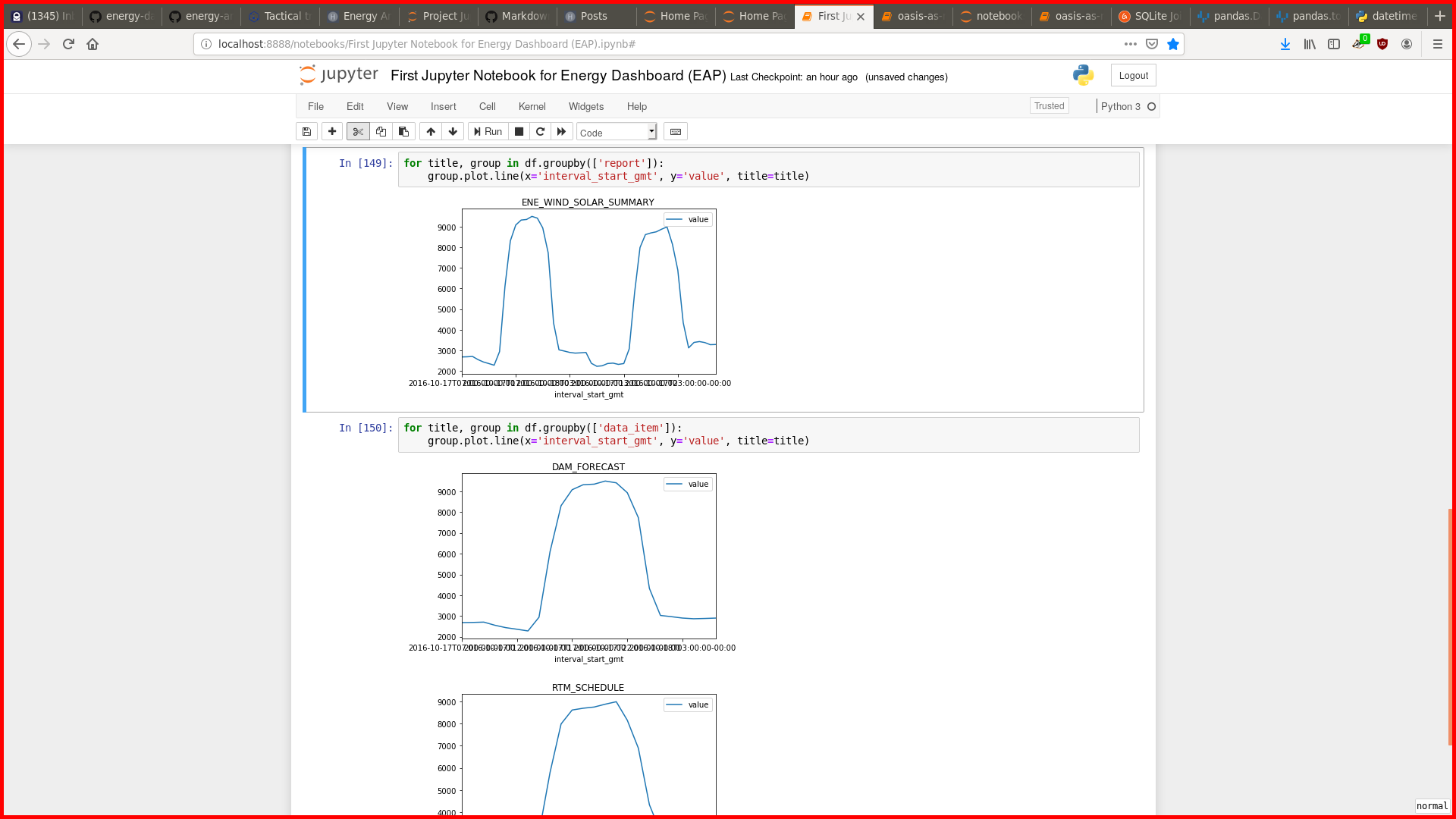Energy Analytics Project - Part 2 : How To

I introduced the Energy Analytics Project in my previous blog post, Energy Analytics Project - Part 1 : BackStory.
This post will dive into how to use this project and hopefully give you some ideas for how to extend and contribute to it.
The following posts will dive into the more technical aspects of how, what, and why as well as highlight some of the false starts, dead-ends, frustrations and successes of trying to create a data-centric application.
How To / Getting Started
I wrote a How To / Getting Started Guide here. Rather than repeat that information, I’ll assume you’ve read that page and want even more of an introduction or ideas for how to use this project.
Beyond Getting Started
OK, so you’ve played around with a data set or two, you’ve read through the CAISO documentation that describes the various data feeds that are available… now what?
Here’s where things take off.
Together, we need to figure out how to answer basic regional questions like:
- What are our real hard vs soft energy needs?
- What are our predicted energy needs over the next 20-50 years?
- How can we most cost-effectively de-carbonize?
- How can we do that in ways that build community, empower citizens, and reverse discriminatory impacts to ‘front line’ communities?
Democratize Data
I propose that freely available data and analysis is critical for our success.
My reason for putting this project together is to serve as a model going forward. CAISO has published enough data that we can reason about that market. I’d like to get similar data sets from Oregon, Washington, Idaho and Montana. If we can get some idea as to the shapes of these different markets and how they can be beneficial to each other, then we can make real progress.
I’ve written some ideas on that here.
One thing that I’m very concerned with is restricted access to data. We need public access to data, public analysis and counter analysis, and informed decision making.
Pitch
So the beyond-getting-started pitch is:
- Help determine which data sets are useful for understanding the California markets
- Help retrieve those data sets from the other states (I can help with this)
- If the data sets are not available, then help cultivate relationships and retrieve those data sets
How can you help?
- Join the mailing list
- Become a contributor – this is Free Software, contributions are welcome
- Become a data curator – help me source new data sets and manage the existing ones
- Become a data scientist – start creating Jupyter Notebooks and sharing your knowledge
And if you are a domain expert in either data science or the energy sector, please jump in and lend your expertise.
In the next post, I’m going to dive in and discuss the platform architecture, the tooling, and how the design trade offs interact with daily use. When posted, it’ll be here: Energy Analytics Project - Part 3 : Architecture.
-Todd